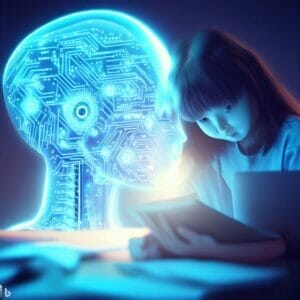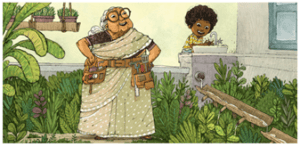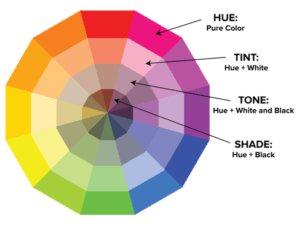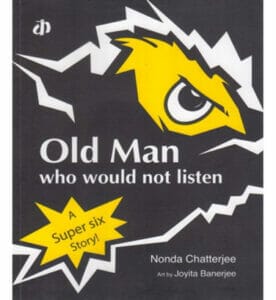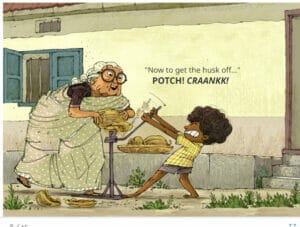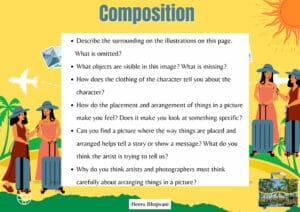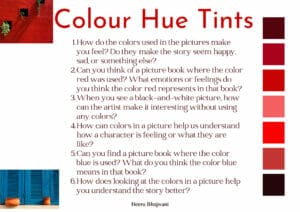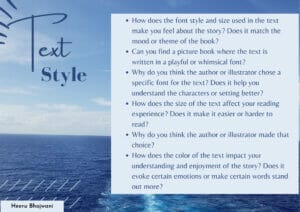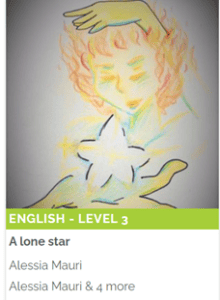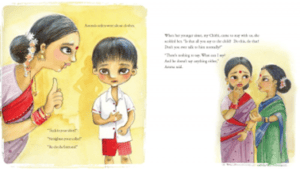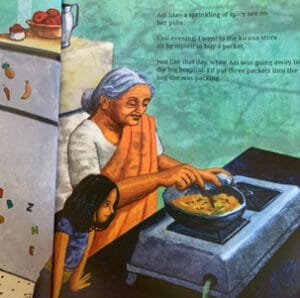 International IB Curriculum with diverse nationalities:
International IB Curriculum with diverse nationalities:
If your school serves a global nomadic community of children from different countries, then, for sure, your school management would have made the library the centre of the school’s academic program. International IB curriculum schools mainly use a multi-disciplinary approach, making it mandatory for the school to have a rich, dynamic library collection. The school’s senior management emphasizes that the library collection must include books, digital resources, and multimedia while ensuring that these materials are easily accessible to parents, teachers, and students. Not only should the resource library collections be high-quality, relevant, and engaging, but they should also have librarians who are well-informed about their school curriculum from a global perspective while being aware of the latest education trends and the changing reader’s tastes.
International IB Curriculum with an Indian Community:
A truly international school fosters intellectual and professional growth while ensuring that every citizen in the school is treated as a global citizen with respect and gratitude. When I started my journey, I began to learn and understand the needs of the international curriculum and why and how the library is the centre of an international curriculum. I soon realised that librarians are crucial in promoting literacy and encouraging lifelong learning through a rich and varied collection. An international curriculum with a large Indian community must balance Indian literature with international literature since a global/local connection is a big emphasis of the IB curriculum; UNESCO and the Indian curriculum too foster open-mindedness and inclusion.
How to manage sensitive issues in picture books?
Picture books are a child’s first introduction to complex topics such as diversity, family dynamics, death, and cultural differences. It is, therefore, essential for librarians to select materials that handle these subjects with care, accuracy, and empathy.
Parents often come in to browse and check out books from the library. One day, a parent walked up to me before the start of school, and she said, “My daughter brought this book home, and I wondered why you allowed her to check it out; she is only in grade 1, and this story talks about the grandparent dying?” My reply to the parent was that since her daughter picked up the book, it would be a perfect opportunity to first honour her voice and choice, and it would also be an ideal opportunity to discuss the life cycle of living things in the world. For example, every flower and every living animal die; where there is death, there is birth. Librarians, therefore, play a crucial role in identifying and curating these sensitive materials to ensure they contribute positively to a child’s development. Books that deal with death and grief are also prevalent, offering children ways to understand and cope with loss.
What I learned:
 Sensitive issues in children’s picture books require careful handling due to their potential to evoke strong emotional responses or controversy. These topics can include subjects such as death, divorce, illness, cultural and racial diversity, gender identity, and socio-economic disparities. Some titles of books that deal with grief and death are Grief Is an Elephant by Tamara Ellis Smith, illustrated by Nancy Whitesides, Boo! When my sister died by Richa Jha, delicately deals about death; The Dead Bird by Margaret Wise Brown, illustrated by Christian Robinson a powerful book about death and rituals. The sensitivity of these issues arises from their profound impact on children’s understanding of the world and their place within it. The responses are varied, depending on the culture and the family milieu they come from. These picture books give children the tools and vocabulary to process and understand complex emotions and realities without causing distress or confusion.
Sensitive issues in children’s picture books require careful handling due to their potential to evoke strong emotional responses or controversy. These topics can include subjects such as death, divorce, illness, cultural and racial diversity, gender identity, and socio-economic disparities. Some titles of books that deal with grief and death are Grief Is an Elephant by Tamara Ellis Smith, illustrated by Nancy Whitesides, Boo! When my sister died by Richa Jha, delicately deals about death; The Dead Bird by Margaret Wise Brown, illustrated by Christian Robinson a powerful book about death and rituals. The sensitivity of these issues arises from their profound impact on children’s understanding of the world and their place within it. The responses are varied, depending on the culture and the family milieu they come from. These picture books give children the tools and vocabulary to process and understand complex emotions and realities without causing distress or confusion.
Common sensitive topics about different families in children’s literature:
In children’s literature, several sensitive topics are frequently addressed to help young readers navigate their emotions and experiences. Common topics like divorce, adoption, and non-traditional family structures are handled through well-crafted picture book stories. Sometimes Mama, Sometimes Papa by Nandini Nayar, illustrated by Upamanyu Bhattacharyya, is one such story, Two Homes by Claire Masure, and many more like these describe various types of family structures. I have had students talk about how cool it would be to have two houses like the story Sometimes Mama Sometimes Papa, although it may seem difficult to some children and exciting to others. Such stories become a great resource when discussing different types of families. Children begin to embrace various forms of families. Non-traditional family structure books include – We Belong Together: A Book About Adoption and Families by Todd Parr. A book that celebrates the diversity and joy of adoptive families. Ritu Weds Chandni by Ameya Narvankar, gives a glimpse into same-sex relationships.
their emotions and experiences. Common topics like divorce, adoption, and non-traditional family structures are handled through well-crafted picture book stories. Sometimes Mama, Sometimes Papa by Nandini Nayar, illustrated by Upamanyu Bhattacharyya, is one such story, Two Homes by Claire Masure, and many more like these describe various types of family structures. I have had students talk about how cool it would be to have two houses like the story Sometimes Mama Sometimes Papa, although it may seem difficult to some children and exciting to others. Such stories become a great resource when discussing different types of families. Children begin to embrace various forms of families. Non-traditional family structure books include – We Belong Together: A Book About Adoption and Families by Todd Parr. A book that celebrates the diversity and joy of adoptive families. Ritu Weds Chandni by Ameya Narvankar, gives a glimpse into same-sex relationships.
What I learned:
Many children experience similar separations from their parents, and this book can help children comprehend, accept, and navigate their emotions. An open discussion of this book provides safety, normality, and a safe environment of trust and open communication. Stories like these evoke questions from different cultures, allowing families to discuss and explain their own family’s value systems to their children. Questions like: “Imagine a family with two dads. What activities do you think they might enjoy doing together?” OR “What do you think it’s like to have two mums in a family?” How might the experience of being adopted shape a person’s identity?” “How do Ritu and Chandni’s feelings for each other show that love is the same for everyone? Why is it important for everyone to have the right to marry the person they want as adults? These questions open the minds, create acceptance of various value systems and develop an empathetic understanding of our society. Question encourages children to see the universal nature of love, irrespective of gender, bias and hatred.
 How do you handle culturally & racially diverse literature?
How do you handle culturally & racially diverse literature?
Cultural and racial diversity is a significant theme, aiming to foster inclusivity and respect for different backgrounds. Embracing and including titles of other races is important so that the students do not develop a mindset of Euro/American/ Caucasian superiority. Stories that delve into issues of disability and illness, both physical and mental, are explored to promote empathy and awareness. These days, gender identity is becoming prominent in the educational landscape. Since I come from an Indian mindset; I learn about gender identity and educated myself about it, creating a sense of unbiased opinion in my learning. Picture book stories support children in understanding and accepting diverse gender roles and identities. Along with selection, it is very necessary to have open discussions about these themes. Discussions with primary school students on questions like: “What steps can we take to ensure that everyone feels included and valued in our community? Especially children who might be differently abled than you? (For example, mentally and physically differently abled)”. “How can we celebrate and appreciate the unique qualities that each person brings to our group? (More in this article in the Hindu Newspaper)
What I learned:
Sensitive topics, including socioeconomic issues like poverty and homelessness, can be addressed with care, with the intent to raise awareness and encourage social responsibility. These problems are seen in all countries, whether they are first-world countries or not. Each topic requires careful story presentation to ensure it is accessible and appropriate for young readers while keeping one’s biases at bay. Picture books that describe poverty and homelessness can be discussed from the lens of all countries rather than only third-world countries. Bringing in UNESCO’s sustainable goals resources creates thinkers, who knows maybe one day, one of these students might find solutions to our world problems.
Importance of local cultural values:
For a holistic education approach, it is important that the library collection reflect diversity and house materials that reflect all cultures, languages, and ideas. It is pivotal to be sensitive while accurately and respectfully depicting different cultures, but how the books might be received by children from the same or other cultures is sometimes challenging. In my library, we have a few books on Islam Celebrations, describing the Islamic festivals and cultural habits. One student while browsing the collection – approached me with one of the books on Islam and said, “Ms Bhojwani, this book has inaccurate information and must be banned. He said, “This is not how we celebrate our festivals, and the names of the different prophets are not hierarchically correct.” Should I disqualify the book from the library collection? This led to a more significant discussion on the principles of Islam and the various sects within the Islam religion, and this book was one which had a different representatives since the Isam religion also has various sects & varied aspects of interpretation of Islam.
cultures, languages, and ideas. It is pivotal to be sensitive while accurately and respectfully depicting different cultures, but how the books might be received by children from the same or other cultures is sometimes challenging. In my library, we have a few books on Islam Celebrations, describing the Islamic festivals and cultural habits. One student while browsing the collection – approached me with one of the books on Islam and said, “Ms Bhojwani, this book has inaccurate information and must be banned. He said, “This is not how we celebrate our festivals, and the names of the different prophets are not hierarchically correct.” Should I disqualify the book from the library collection? This led to a more significant discussion on the principles of Islam and the various sects within the Islam religion, and this book was one which had a different representatives since the Isam religion also has various sects & varied aspects of interpretation of Islam.
What I learned:
Open conversations and non-judgemental discussions lead to trust and respect, as well as an opportunity to evaluate and become reflective of one’s beliefs and values. I ensured I did not add my religious beliefs to the student. But, through a socrative style of questioning and discussion, the child could untie his thinking and share his understanding. The library is a place to have diverse viewpoints and thus encourage open & respectful conversations. This was possible because I learned that it is important for libraries to provide a wide variety of information. When I struggle with sensitive issues, I meet with the school counsellor or the academic coordinator to help me scaffold and untie my doubts and help facilitate my thinking.
How to handle diverse opinions and beliefs?
 I once had a parent who insisted I withdraw all fairy tales from the collection because stories like Red Riding Hood created fear, Hansel and Gretel brought about feelings of animosity towards stepmother Cinderella, who did not have the courage to stand up for her rights, and so on and so forth. These popular stories have been carried out for centuries and have their place in the collection. It was important for me to explain the importance of these classic stories as literature and as a way to compare and contrast the present with the past. Use these classics to recreate stories that would be relevant in the present. It also good to remind children that these stories were earlier written for adults and not for children.
I once had a parent who insisted I withdraw all fairy tales from the collection because stories like Red Riding Hood created fear, Hansel and Gretel brought about feelings of animosity towards stepmother Cinderella, who did not have the courage to stand up for her rights, and so on and so forth. These popular stories have been carried out for centuries and have their place in the collection. It was important for me to explain the importance of these classic stories as literature and as a way to compare and contrast the present with the past. Use these classics to recreate stories that would be relevant in the present. It also good to remind children that these stories were earlier written for adults and not for children.
What I learned:
Sometimes, it is important to educate parents and children that everyone views the world differently, and a book is a medium for expressing the writer’s thoughts. Not everyone has to agree with their views, but it is important to have empathy and understand their feelings and thoughts from the writer’s perspective. After all, diverse thoughts and views lead to diverse cultures, and we must learn to respect everyone’s viewpoint. A reconsideration policy form (Details from the ALA is here) must be created, not precisely like the ALA but a revised version that meets the needs of your school. This helps provide fact-based evidence of creating open communication between parents and the education institute.
Indian diversity and values:
Our Indian Constitution believes in preserving diversity and promoting unity in diversity. In keeping with this ideology, it is essential that we share stories written by different ethnic authors with our students, as well as picture books that depict characteristics of different lifestyles. For example, stories like Paati’s Rasam by Janaki Sabesh & Dhwani Sabesh portray a relationship between a grandmother and a child in South India, Bumoni’s Banana Trees by Mita Bordoloi gives you a glimpse into Bumoni’s big backyard, outside the Kaziranga National Park, in North-East of India. We are the Dancing Forest by Raj Shekhar, illustrated by Venkat Shyam, inspired by an Adivasi song from Telangana and celebrating Gond’s art style.
What I learned:
Librarians must be vigilant about avoiding materials that perpetuate stereotypes or cultural inaccuracies, striving instead to build a collection that celebrates diversity and inclusivity. In a school environment, we must ensure that minds are exposed to new ideas and that diversity is appreciated. Culturally sensitive collections can help foster a sense of belonging among students, allowing them to see their own experiences reflected in the books they read. Furthermore, exposing students to different cultures through literature can promote empathy, understanding, and global awareness. One of the core characteristics of librarians is to expose students to a variety of cultural beliefs through folklore. Truly, emphasizing that books act as windows, mirrors and sliding doors.
Matured content or controversial literature:
Recently, Colleen Hoover’s books have become controversial in Indian Schools. Should we include them or not? I do have some mature content like the Twilight series and Colleen Hoover’s books, in my library collection; the signage next to these books indicates that they are for mature readers (suggesting they may have sensual content and graphic violence) These books also reflect real-life scenarios in the western world and universal themes that resonate with mature readers. Such stories can offer valuable insights into various aspects of life, relationships, and personal growth for children above the ages of 14 and 17 years. (Check out Readers’s Warehouse for understanding ratings) It all depends on the nature of your school’s values and mission. A conservative school value system may not encourage such literature, and as a librarian, you must respect it because the parents send their students to a specific school, knowing the vision and mission of the school. Some schools have questioned books by Sidney Sheldon. I believe his books show intricate character development and suspenseful storytelling. He often writes thrillers and mysteries that delve into the themes of power, ambition, betrayal, and revenge. His novels are fast-paced narratives with unexpected twists, keeping readers engaged from start to finish. Sheldon’s protagonists are usually strong, complex women who face significant challenges and adversaries, and his books often explore the darker aspects of human nature and society. The stories are set in glamorous, high-stakes environments, such as international business, politics, and the entertainment industry, adding an element of intrigue and sophistication.
What I learned:
It is crucial to balance the inclusion of such content with cultural sensitivity and appropriateness, ensuring that the library remains a resourceful and respectful space for all readers. I believe the school library caters to our teaching faculty and the parent adult community. Therefore, these books may be housed in the adult or high school collection. These novels entertain and offer insights into human behaviour and societal dynamics, making them appealing to a wide range of readers, including high school students. Every librarian must develop clear guidelines for collection development policies that provide criteria for selection materials and guidelines for sensitive issues. These policies are transparent and framed with input from administrators, curriculum coordinators, teachers, and parents. Effective communication is key to addressing parent’s concerns and fostering an understanding of the librarian’s role in promoting a balanced and inclusive collection.
Balancing the library collection, curriculum needs, and mission of the school and supporting the needs of the students and the community can be challenging and rewarding.










